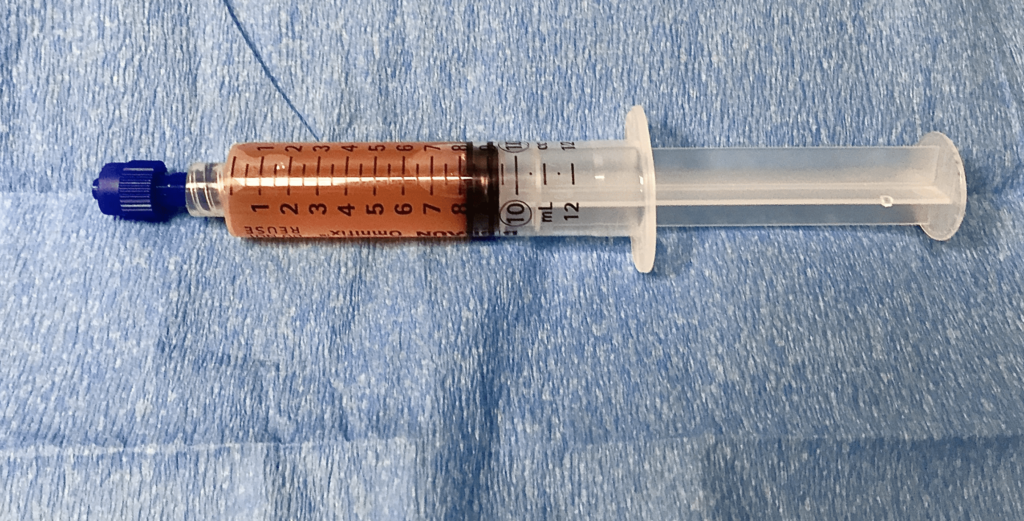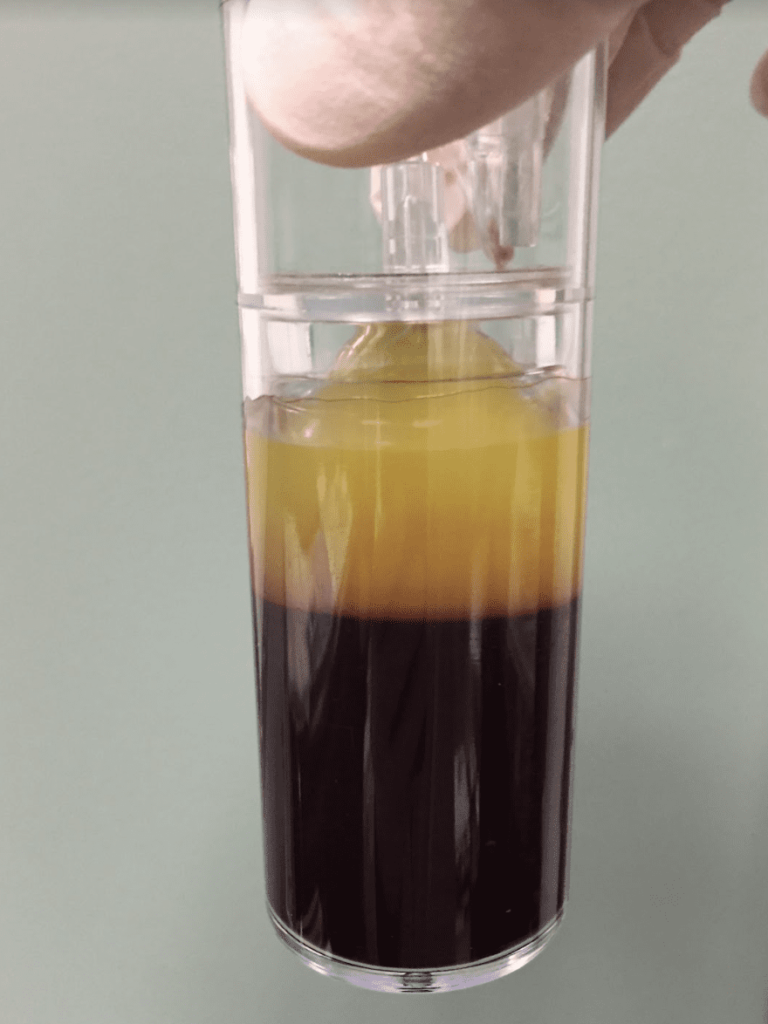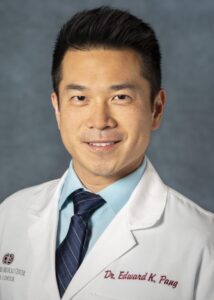Regenerative Medicine Q & A

What is Platelet Rich Plasma (PRP)?
PRP contains plasma (the liquid portion of your blood) together with a high concentration of platelets, specialized cells that live in your bloodstream.
Dr. Pang obtains autologous PRP in the office by taking a sample of your blood and processing it in a state-of-the-art centrifuge. The centrifuge separates the blood components, allowing Dr. Pang to draw off the highly-concentrated platelets and plasma for your injection.
How do PRP injections ease pain and promote healing?

Any time you suffer tissue damage due to an injury or disease, the platelets in your bloodstream automatically respond. They go to the damaged tissues, stop the bleeding, and release proteins called growth factors.
Growth factors have an essential role in healing. They activate the healing response by triggering cellular actions that:
- Regulate inflammation
- Accelerate healing
- Attract stem cells to the area
- Stimulate new blood vessel growth
- Build a matrix to support new tissue growth
Your body’s natural stem cells regenerate new cells that rebuild all of the injured tissues.
When you get a PRP injection, the highly-concentrated platelets immediately go to work and trigger all of the same healing reactions.
When would I need PRP injections?
You may need PRP injections when you have a severe injury that overwhelms your body’s normal healing response. Dr. Pang often recommends PRP for joints or when the injured tissues don’t have a good blood supply, such as ligaments and tendons.
As you get older, your immune system, cellular communication, and healing response tend to slow down. A PRP injection can give your natural systems the boost they need.
Dr. Pang uses PRP injections to treat a range of conditions affecting your joints and spine, such as:
- Herniated discs
- Degenerative disc disease
- Osteoarthritis
- Tendon injuries, such as the rotator cuff tendons and tennis elbow
- Ligament injuries
- Meniscus tears
- Tendonitis
PRP generally offers a safe and effective way to relieve chronic pain. Healing the damaged tissues is the best way possible to eliminate your pain.
What should I expect during a PRP injection?

Dr. Pang numbs the injection site with a local anesthetic. Then he uses ultrasound to view the tissues and guide the needle. After placing the needle at the damaged tissues, he injects your PRP.
You may have some discomfort at the injection site, but it shouldn’t last long. You may utilize lidocaine patches or Tylenol (acetaminophen) if there is pain. Try to avoid icing or utilizing anti-inflammatory medications for two weeks. Dr. Pang may ask you to avoid certain activities for two weeks as well. The goal is to take stress off the joint or spine so that the tissues have time to heal.
To learn if PRP injections can help your ongoing joint or spine pain, call the Edward K. Pang Medical Corporation or book an appointment online today.
Stem Cell Injection
What are stem cell injections?
Stem cell injections are a medical treatment that involves introducing stem cells into the body to promote healing, regeneration, or repair of damaged tissues. Stem cells are unique because they have the ability to develop into different types of cells and aid in the body’s natural repair processes. These injections are commonly used in regenerative medicine to treat conditions like joint pain, arthritis, soft tissue injuries, and degenerative diseases. Dr. Pang obtains autologous stem cells by harvesting from the bone marrow in your iliac crest (back of the hip bone), and processes the cells in a cutting-edge centrifuge.
When would I need stem cell injections?
You may need stem cell injections if you have a condition that involves chronic pain, tissue damage, or slow healing that hasn’t responded well to traditional treatments.
Common reasons include:
● Joint Pain & Arthritis: Stem cell therapy can help regenerate cartilage and reduce inflammation in osteoarthritis or rheumatoid arthritis.
● Tendon & Ligament Injuries: Conditions like tendonitis, rotator cuff tears, or ligament sprains can benefit from enhanced tissue repair.
● Muscle Injuries: Severe strains or muscle tears may heal faster with stem cell injections.
● Spinal Conditions: Degenerative disc disease or back pain from disc damage may be improved by regenerative therapy.
● Non-Healing Fractures: Stem cells can accelerate bone healing in cases where fractures are slow to heal.
What should I expect during a stem cell injection?
During a stem cell injection, you can expect a relatively straightforward and minimally invasive procedure. Here’s what typically happens:
1. Cell Collection (if using your own stem cells): Stem cells are usually harvested from your bone marrow (often from the hip). The targeted harvest area is numb with strong local anesthetics. Then, an instrument is used to collect the stem cells, which takes about 5-10 minutes. You may feel a cramping sensation in the buttock or hamstrings, which is normal and will go away once collection is complete.
2. Processing: The collected stem cells are processed using a state of the art centrifuge for maximum effectiveness.
3. Injection Procedure: The concentrated stem cells are injected directly into the injured or painful area using ultrasound or fluoroscopic guidance to ensure precise placement. 4. Recovery & Aftercare: You may experience mild swelling, soreness, or stiffness at the injection site and harvest site for a few days. Most patients can resume normal activities after 72 hours. But strenuous exercise will need to be limited for 2 weeks. 5. Healing Process: Results vary, but many patients notice gradual improvement over weeks to months as the stem cells work to repair and regenerate tissue.
Dr. Pang will provide specific post-injection guidelines, including pain management and activity restrictions, to optimize healing.
Call Dr. Pang’s office to make an appointment to find out more how stem cell injections can help you.
Alpha 2 Macroglobulin (A2M)
What is Alpha-2-Macroglobulin?
Alpha-2-Macroglobulin (A2M) is a large plasma protein found in the blood that plays a crucial role in protecting tissues from damage and inflammation. It acts as a natural inhibitor of enzymes, such as proteases, which break down proteins and can contribute to tissue degeneration. A2M is used in regenerative medicine, particularly for treating joint pain, arthritis, and cartilage damage, as it helps block enzymes that degrade cartilage and promotes tissue repair, especially when there is extensive inflammation. A2M is obtained and concentrated from your blood when being processed with PRP. It is then injected into affected areas to reduce inflammation and slow down degenerative processes.
When would I need A2M injections?
An Alpha-2-Macroglobulin (A2M) injection is typically considered for patients dealing with joint pain, osteoarthritis, or degenerative disc disease. A2M is a naturally occurring protein in the blood that helps inhibit enzymes responsible for cartilage breakdown and inflammation.
You might need an A2M injection if you have:
● Osteoarthritis (OA): A2M helps slow cartilage degeneration.
● Bursitis: A2M helps reduce inflammation in inflamed bursa
● Chronic Joint Pain: Such as in the knees, hips, or shoulders due to wear and tear. ● Degenerative Disc Disease (DDD): Used in regenerative medicine to reduce inflammation and promote healing.
● Sports Injuries or Cartilage Damage: It may assist in tissue repair.
How it Works:
A2M is extracted from your own blood, concentrated, and then injected into the affected joint to reduce inflammation and slow cartilage breakdown.
When to Consider It?
● If you want a non-surgical approach before considering joint replacement. ● If other treatments like steroids or hyaluronic acid injections haven’t worked. ● If you’re looking for a more regenerative rather than temporary pain relief solution.
What should I expect during an A2M injection? During a Alpha-2-Macroglobulin (A2M) injection, you can expect the following:
1. Blood Draw & Processing:your own blood is drawn then concentrated using a centrifuge similar to what is done with PRP processing. Then, an additional step is done to filter and concentrate the fluid to obtain A2M.
2. Injection Procedure: The target area (joint or disc) is cleaned and sterilized. A local anesthetic is used to minimize discomfort. A2M is injected directly into the affected area using ultrasound guidance or fluoroscopic guidance for precision.
3. Post-Injection Care: You may experience mild swelling, soreness, or stiffness at the injection site for a few days. Avoid Ice packs and NSAIDs such as Advil and Aleve. Over-the-counter
Tylenol or lidocaine patch can help manage discomfort. Avoid strenuous activities for a few days, but light movement is encouraged. 4. Recovery & Results: Some patients report pain relief within a few weeks, while others may take a few months. Multiple injections may be recommended for better results. Since A2M is regenerative, benefits may last longer than steroid injections.

